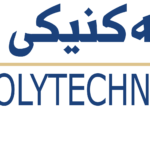- Kosrat Dlshad Ahmed
- [email protected]
- +9647506307788
- Bone Fracture - Thesis_compressed
-
Computers have demonstrated their significance in all areas of human existence, including financial services, e-commerce, communication, education, research, innovation, and healthcare. The use of computers to make medical diagnoses has expanded rapidly in recent years. An efficient approach that uses modern technology while requiring fewer man-hours and materials to provide accurate diagnoses. While diagnosing an injury to a human body, doctors often obtain X-ray images of the affected area.
Numerous advanced technological tools have been created to aid doctors and medical facilities in enhancing patient care. The conventional X-ray scanners, known for generating unclear images of bone structures, pose a risk of inaccurate diagnoses of bone fractures when employed by surgeons.
The approach detailed in this research outlines a thorough procedure aimed at improving the precision of image examination within the realm of diagnosing medical conditions using X-ray images. Real-life medical data often suffers from noise, inconsistency, and incompleteness, necessitating robust preprocessing. The initial step involves applying a Gaussian filter to the X-ray images for noise elimination, followed by the utilization of adaptive histogram equalization to improve contrast. Edge detection is then conducted using the Canny technique, integrating adaptive histogram equalization to enhance contrast quality.
The process of feature extraction utilizes the Gray-Level Co-occurrence Matrix (GLCM) for textural feature extractions, yielding a set of 100 features for each image. To classify bone fractures, a range of machine learning algorithms (Decision Tree, Naïve Bayes, k-Nearest Neighbors, Random Forest, and Support Vector Machine) along with deep learning algorithms, such as Convolutional Neural Network (CNN) and transfer learning via VGG-16, are employed to improve overall performance.
As an additional point, the outlined approaches were applied for bone fracture detection using both national and international datasets. In this particular case, 80% of the dataset was employed for training, while the remaining 20% was allocated for testing. The research assessed the effectiveness of diverse algorithms, including Naïve Bayes, Decision Tree, Nearest Neighbors, Random Forest, SVM, and CNN, resulting in accuracy scores spanning from 0.64 to 0.96. Among these, statistically, the highest accuracies were observed in SVM, Random Forest, and CNN in this thesis.
- Erbil Technical Engineering College
- Information Systems Engineering
- Machine Learning
- سليم سليم حسين
- [email protected]
-
تهدف الدراسة الى بيان أثر القياس والإفصاح المحاسبـي وفق متطلبات المعيار المحاسبـي الدولي (– )IAS8
السياسات المحاسبـية والتغيرات في التقدير ات المحاسبـية والأخطاء- في تعزيز جودة التقارير المالية، ولتحقيق أهداف
الدراسة واختبار فرضياتها تم الاعتماد على استمارة الاستبانة، إذ تم استطلاع اَراء الأكاديميين والمحاسبـين القانونيين
والمحاسبـين العاملين في الشركات في مدينة أربيل حول الموضوع، وتم اختيار ( )210فرداً منهم. وقد اعتمدت
الدراسة على أسلوب التحليل الإحصائي الوصفي وتحليل متغيرات الدراسة واختبار فرضياتها باستخدام برنامج
الحزمة الإحصائية للعلوم الاجتماعية ( .)SPSSوقد توصلت الدراسة الى مجموعة من الاستنتاجات: أهمها إن
القياس والافصاح المحاسبي في القوائم المالية وفقاً لما يتطلبه المعيار المحاسبي الدولي ( )IAS8يخدم مستخدمى هذة
التقارير لإنه يدل على العرض العادل لمحتويات هذه القوائم ويساعد على فهم الأداء المالي، وسيكون لكل ذلك تأثير
كبير في تحسين قرارت المستخدمين، لإن المعلومات المحتواه في القوائم المالية تعد المصدر الاساس لإي قرار يتخذ من
قبل المستخدم، وإن الهدف الاساس لكافة أنواع الافصاح هو اظهار المعلومات المحاسبية الملائمة في القوائم المالية
للمستخدمين وذلك لمساعدتهم في اتخاذ قرارات صحيحة. يوصى الباحث الوحدات الاقتصادية في إقليم كوردستان
بضرورة إعداد وعرض التقارير المالية وفق متطلبات المعيار المحاسبي الدولي ( )IAS 8المتعلق السياسات المحاسبية
والتغيرات في التقديرات المحاسبية والأخطاء كي تكون المعلومات الواردة في التقارير المالية بدرجة عالية من الدقة
والشفافية التي بدورها تساعد مستخدمي التقارير المالية على اتخاذ القرارات الصائبة - Erbil Technical Administrative College
- accountant
- Ali Dilshad Nuraddin
- [email protected]
- 0750 406 7347
- MASTER THESIS last update all
-
Re-vibration, which is the process of repeating the operation of vibration of fresh concrete after a time interval, may be useful to enhance the mechanical properties of concrete (compressive strength, tensile strength, flexural strength, and modulus of elasticity), and also to get the maximum applied load, first crack load, deflection at mid span, stiffness and strain, particularly when successive layers of fresh con[1]rete were placed and the upper layer of fresh concrete was partially hardened. After a period of time, the aggregate particles are rearranged by the re-vibration process, and any trapped water is removed, potentially enhancing the concrete's compressive and tensile strengths. The use of re-vibration can help to remove plastic shrinkage cracks for exposed concrete. The amount of time that re-vibration lasts has a big impact. Using the re-vibration technique in construction of structural members is expected to improve the structural properties of the beams, and cracking. The effect of the waiting time before re-vibration must be investigated and time duration of vibrations on the structural response of flexural reinforced concrete beams to establish and verify the best process to apply this technique. The purpose of this study is to examine the impact of waiting time before re-vibration. and variable time duration for vibration and re-vibration operation of structural response for flexural reinforced concrete beams and using Ordinary Portland Cement-type 1, with w/c ratio of 0.4, and a greater number of re-vibration time lag intervals ranging from half an hour to two hours to evaluate the impact of re-vibration on the mechanical properties of concrete with different time duration of vibrations ranging from 15 to 60 seconds. The experimental schedule includes a total of 28 twenty-eight rectangular rein[1]forced concrete beams of dimension (125 mm x 250 mm) and length of 1500 mm was prepared for this work. Which were classified into seven groups Each group includes four samples. Beams for group (A, B, C, D, E and F) reinforced with longitudinal top reinforcement of (2ø10mm) and bottom reinforcement of (2ø12mm) with transvers reinforcement (Stirrups) ø12mm all over the beams except group F which are without transverse reinforcement and group G is without longitudinal and transverse reinforcement. Additionally, 144 cylinders with dimensions of 300 mm in height and 150 mm in diameter were utilized to evaluate the concrete's compressive and tensile strengths. After 56 days, these samples were analyzed in an attempt to study the impacts of vibration, and the effect of re-vibration delay and vibration duration on the development of concrete strength. The results have shown that the mechanical properties of concrete, ultimate load, first crack load and deflection at mid-point with various time duration and re- vibration techniques was increased for the 1st one hour and re-vibrated for 45 seconds time duration. After that for waiting time 1.5 and 2 hours and re-vibrated for 60 seconds was decreased.
- Erbil Technical Engineering College
- civil engineering
- structural
- ibrahim shamal abdulkhaleq
- [email protected]
- 0750 749 7686
- AFTER_EDIT_LAST_LAST (1)
-
In the rapidly evolving landscape of online content, the prevalence of clickbait poses a significant challenge for users seeking reliable and informative material. Clickbait, characterized by sensationalized headlines designed to attract attention and drive user engagement, has become a pervasive issue in various languages and cultural contexts. As digital platforms continue to host a vast array of content, the need for robust clickbait detection mechanisms becomes paramount to ensure a trustworthy online experience. This study aims to evaluate the performance of deep neural networks in clickbait detection for both English and Kurdish languages. To address clickbait in Kurdish, we collected 10,000 news articles from various Kurdish platforms, complemented by a dataset of 32,000 English headlines curated by Chakraborty. Utilizing Long Short-Term Memory (LSTM), Bidirectional Long Short-Term Memory (BILSTM), Convolutional Neural Network (CNN), Gated Recurrent Unit (GRU), and a hybrid CNN BILSTM model, we evaluated clickbait detection techniques. Findings underscore the importance of understanding language-specific traits and cultural norms in spotting clickbait across linguistic boundaries. The Bidirectional Long Short- Term Memory algorithm proved most effective in English, boasting a 99.23% accuracy rate, 95.33% precision, 94.33% recall rate, and a 95% F1 score. In Kurdish, the Gated Recurrent Unit algorithm excelled with a 93.93% accuracy rate, 93.13% precision, 95.17% recall rate, and a 94.13% F1 score. This study extends the application of recurrent neural network and deep learning methods in clickbait detection, showcasing their potential in analyzing textual data with nuanced semantic features, contributing valuable insights to the broader field of natural language processing.
- Erbil Technical Engineering College
- Information Systems Engineering
- Machine Learning


